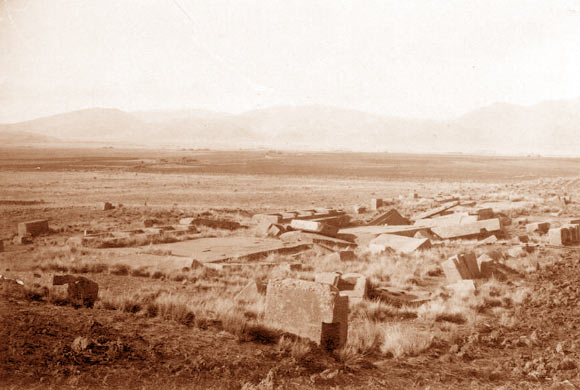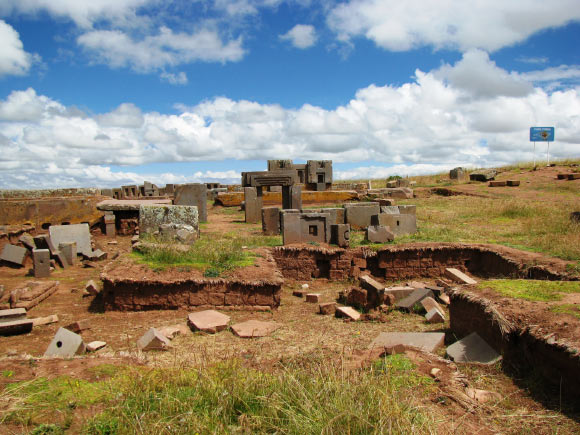The Pumapunku (Gateway of the Puma or Jaguar), a highly damaged pre-Columbian monument at the ancient archaeological site of Tiwanaku, Bolivia, has been reconstructed using 3D printed miniature models of architectural fragments.

Historic photograph of the architecture on the east side of the Pumapunku platform taken by Max Uhle in 1893.
The ruins of Tiwanaku (500-950 CE) present an archaeological challenge owing to intense looting during the colonial period that effectively demolished the site.
One building in particular, the Pumapunku, was described by Spanish conquistadors and travelers of the sixteenth and seventeenth centuries, as a wondrous, though unfinished, building with gateways and windows carved from single blocks.
Unfortunately, during the last five centuries, treasure hunters have ransacked this building to the point that none of approximately shattered remains of 150 blocks of the standing architecture are to be found in their original place.
“A major challenge here is that the majority of the stones of Pumapunku are too large to move and that field notes from previous research by others present us with complex and cumbersome data that is difficult to visualize,” said Dr. Alexei Vranich, an archaeologist at the University of California, Berkeley.
“The intent of our project was to translate that data into something that both our hands and our minds could grasp. Printing miniature 3D models of the stones allowed us to quickly handle and refit the blocks to try and recreate the structure.”
The 3D reconstruction of Pumapunku not only shows possible configurations of what the site may have looked like, but also gives clues about the purpose of the building.
“One particularly interesting realization was that smashed doorways of different sizes that lay scattered around the site were aligned in a manner that would create a ‘mirror’ effect; the impression of looking into infinity, when, in fact, the viewer was looking into a single room,” Dr. Vranich said.
“This may relate to the Incans belief that this is the site where the world was created and could also suggest that the building was used as a ritual space.”
Dr. Vranich and colleagues printed 3D models of a total of 140 pieces of andesite and 17 slabs of sandstone based on measurements compiled by various scholars over the past century and a half of the height, length and width of the blocks found at the site of Tiwanaku.
Once modelled on the computer and then made solid with a 3D printer, they then physically manipulated the blocks to reconstruct the site, trying out different ways in which they may fit together.
“This effort represents a technological step back from recent methods that used computer modelling to recreate structures on screen, but the human brain continues to be more efficient than a computer when it comes to manipulating and visualizing irregular 3D forms,” Dr. Vranich said.
“We attempted to capitalize on archaeologists’ learned ability to visualize and mentally rotate irregular objects in space by providing them with 3D printed objects that they could physically manipulate.”
The results are presented in the journal Heritage Science.
_____
Alexei Vranich. 2018. Reconstructing ancient architecture at Tiwanaku, Bolivia: the potential and promise of 3D printing. Heritage Science 6: 65; doi: 10.1186/s40494-018-0231-0









